#pandalid shrimp
Explore tagged Tumblr posts
Photo

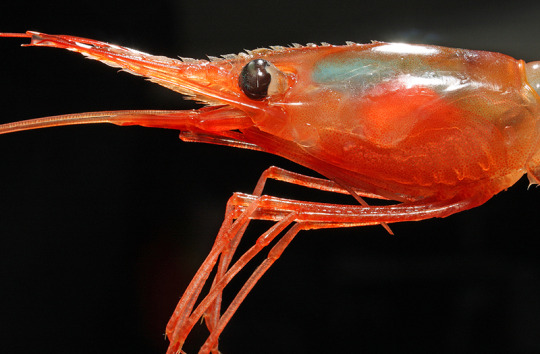
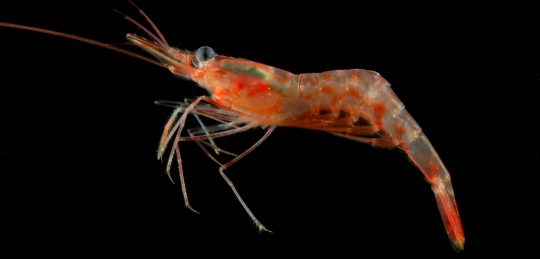
The Shrimp-ly Wonderful Northern Shrimp
A common sight in grocery stores worldwide, Pandalus borealis is known by many names, including the northern shrimp, the pink shrimp, the deep-sea prawn, and the coldwater prawn. In fact, the species is not a prawn but a shrimp; the difference is that shrimp have one pair of legs ending in claws while prawns have three pairs. P. borealis can be found along muddy ocean floors throughout the northern Atlantic and Pacific-- though some regard the two populations as being separate species. Within this range, they typically inhabit cold waters, from -1 °C to 6 °C (30 °F to 43 °F).
As the name implies, pink shrimp are bright pink or red in color, though parts of their bodies are somewhat translucent. Males are smaller than females, at only 12 cm (4.7 in) to their 16 cm (6 in) in length. As a decapod, they have ten legs; the first three pairs, called the maxillipeds are used as mouth parts, while the rest are adapted for swimming. The abdomen is divided into six segments, while the head and the thorax are fused together and protected by a thick shell known as the carapace. P. borealis’ eyes are compound eyes, like those of an insect, and are excellent at detecting movement in the dim light of the deep ocean. Additionally, their long antennae allow it to smell and taste chemicals in the water, assessing the location and suitability of prey.
The coldwater prawn lives in large schools of up to several hundred, though they have no set social structure and do not defend territories. They spend most of their time on the ocean floor, feeding on plankton and carrion. In the coldest parts of the Arctic, this makes them important members of the food web as they can recycle nutrients back into the system. In addition to widespread human predation, a number of octopi, seals, and fish are known to feed on the pink shrimp where available.
P. borealis breeds once a year, from July to September. Males release pheromones as they approach females to signal they are ready to breed, and afterwards the female will carry the stored sperm for up to eight months before fertilizing her eggs. In spring, while the water is still cold, egg-carrying females will migrate close to shore and lay their eggs-- up to 5,000 in a single clutch. The hatched larvae are all male, though they will go through six molts over the course of a year before migrating back to deeper waters and becoming sexually active. They will remain reproductive males for only about a year before molting again and transitioning to female; this is a type of hermaphroditism known as protandry. Individuals will spend the rest of their lives-- typically about eight years-- as a female.
Conservation status: Though they have not been evaluated by the IUCN, the pink shrimp is considered severely overfished in many parts of its native range. Trawling in particular poses a serious threat, as parts of a school not caught will still become stressed and die before reaching maturity. Ocean warming has also damaged populations, since this species thrives only in cold water.
If you like what I do, consider leaving a tip or buying me a ko-fi!
Photos
David Shale
Greenland Institute of Natural Resources
Erling Svenson
#northern shrimp#pink shrimp#Decapoda#Pandalidae#pandalid shrimp#true shrimp#shrimp#decapods#crustaceans#Arthropods#marine fauna#marine arthropods#benthic fauna#benthic arthropods#deep sea#deep sea arthropods#atlantic ocean#Pacific Ocean#animal facts#biology#zoology#queer animals#queer fauna
189 notes
·
View notes
Text
(Page 1) The Pulchritudinous, Horrific Story of the Foolish, Impatient Doctor Diggory Avarus
Dr. Diggory Avarus had done it.
He’d seen this technology before, done by fascinated nonprofits who just wanted to “make the world a better place” or “improve the life of the everyman” or something like that, but they hadn’t shared their techniques, and the tech was relatively new. There were a couple people who used it regularly, and reported a changed view of the world; rating it an overall pleasant and enjoyable experience. But Dr. Avarus saw so much deeper..
The multiverse. Limitless potential. An infinite storage space, or a race of people who loved to work without pay, or perhaps yet undiscovered technologies ripe for the “borrowing”; all in order to feed the corporate empire Dr. Avarus owned and operated. His late grandfather, Dr Sage, (who always insisted on being referred to by his first name,) had built it from the ground up, and Dr. Avarus wasn’t about to allow such a trusted brand to grow destitute and die; especially not with how easily it made money for him and his shareholders.
The multiverse. Quiet and easy access to any universe within its limitless bounds could grant one anything they desired. Perhaps there was a universe with fully functioning matter generators, or a universe where quantum physics had been cracked, and nanobots could be bought at corner stores like cheap drones. And the button in Dr. Avarus’s hand made it all possible.
Months of hard labor and many sleepless nights had allowed the creation of this device: a machine that temporarily bridged universes, allowing one to cross from one universe into the next. Dr. Avarus was not a patient man, and these past six months had taken a toll on him, as he’d worked as fast as possible to bring such a machine into being. But he’d finally done it. All he had to do now was press the big, red button.
Doubts flooded the mind of his employees as they watched him ponder the device they’d created. Had production been too rushed? How safe was this machine? What if it failed?
What if it destroyed the multiverse?
It wasn’t their job to worry about such things, however. All that was required of them was that they were to bring to life Dr. Avarus’s vision; and so they had. They needed to feed their families, after all. Dissent was above their pay grade.
And so that night they’d gone home, the thought gone from their minds. They kissed their spouses, embraced their loved ones, and enjoyed their family dinners.
But Dr. Avarus didn’t go home that night . He stared at the button, desiring to press it. The temptation was beginning to overcome him as the moon reached its peak. It was a full moon, bathing the seductive button in its light. It glowed radiantly, more vibrant than anything else in the room. It was all black as night, save for this singular spot of color, holding his rapt attention, making him unable to focus on anything else. HIs arm moved almost without his input, swimming toward the button like a pandalid shrimp to an anglerfish. He hesitated, however, his hand hovering above the object of his temptation. His every sense, his every organ, every fiber of his being begged him to press it.
No, he thought, stopping his hand. WIth effort, he pulled it back. It is unsafe. We have not yet finished this machine. We have not incorporated any of the necessary redundancies and safety measures. It would not be right, (and even be needlessly foolish and impatient,) to press it.
And so he walked away, leaving it untouched and unattended, not giving into his temptation.
Yet, even though in an infinite number of universes he did not press the button, in an equally infinite number, he did.
And this is what happened to the foolish, impatient Dr. Diggory Avarus.
<Next>
#creative writing#writing#writers on tumblr#fiction#scifi#science fiction#story#original story#The Pulchritudinous Horrific Story of the Foolish Impatient Doctor Diggory Avarus
15 notes
·
View notes
Photo

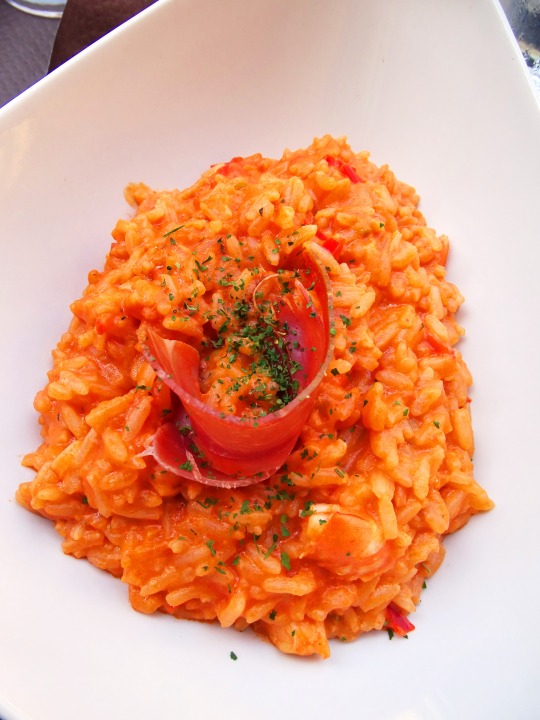
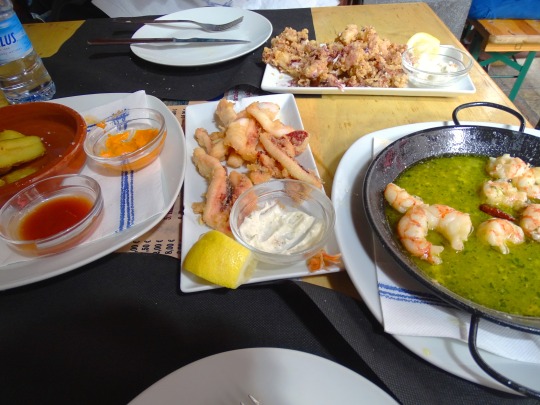


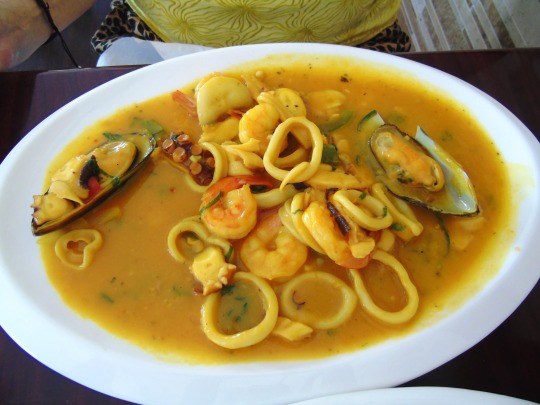
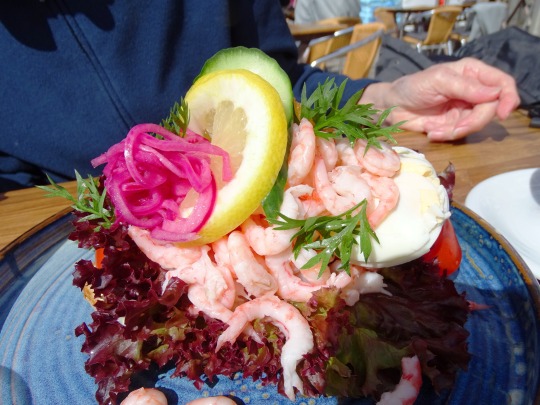
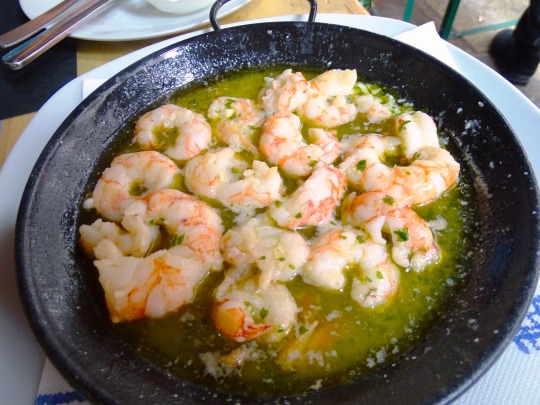
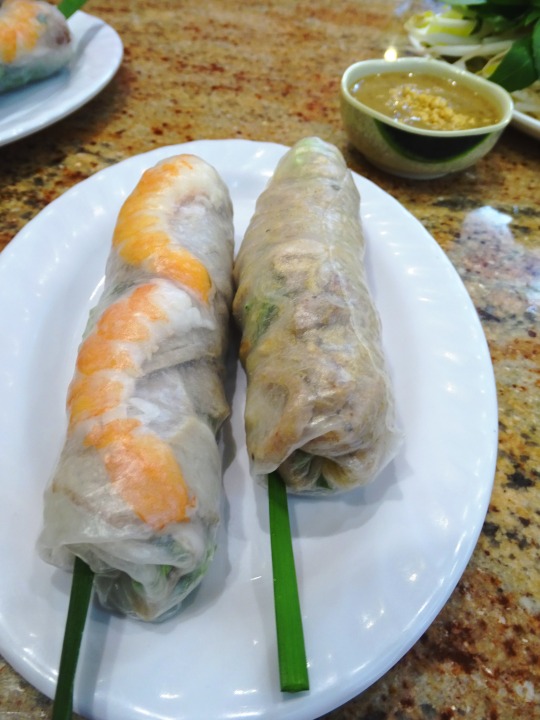
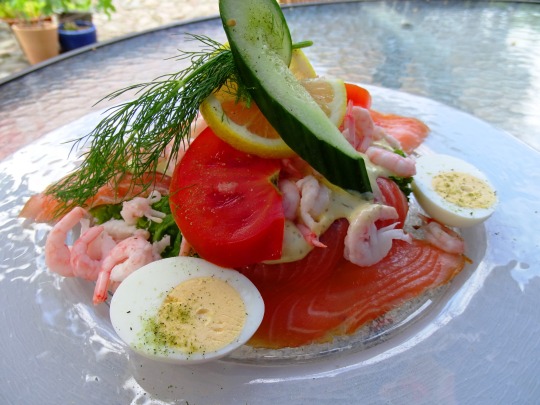
National Shrimp Day
Epicures, chefs, suppliers, associations, restaurants, and others celebrate shrimp today, the most widely eaten crustacean in the United States. As part of the day, videos and recipes are shared, contests are organized, specials are offered, and shrimp are eaten.
There are many species of shrimp. Some large shrimp are known as prawns. Coldwater shrimp, known as pandalid shrimp, are small shrimp found in the ocean waters in the northeast and northwest regions of the United States and Canada. One of these is the Pandalus borealis, a pink-hued shrimp used in chowders, soups, and salads. Warm water shrimp are found in tropical and subtropical regions around the world. These include white, brown, and pink shrimp, as well as hopper, tiger, and banana shrimp. These shrimp vary in size, taste, texture, and cost.
Wild shrimp, classified as either warm water or cold water shrimp, are caught in coastal ocean waters. These shrimp are well regulated, and make up less than ten percent of the shrimp consumed in the United States. Wild shrimp caught on the coasts of the United States are known as domestic shrimp. Farmed shrimp are warm water shrimp that are grown in open and closed pond systems and given formulated feeds. Over ninety percent of the shrimp eaten in the United States are farmed shrimp raised in other parts of the world. Imported shrimp usually means farmed shrimp that come from either Asia or the Pacific and Gulf coasts of Central America and South America.
Shrimp may be purchased refrigerated or frozen, the latter being the most common. They may be purchased whole or peeled, headless, tailless, and deveined. They are usually sold by weight and are categorized into sizes: jumbo, extra-large, large, medium, and small. Shrimp provide lean protein, are low in fat, and contain iron, vitamin B12, choline, selenium, and omega-3s. Their nutrients benefit the heart, boost immunity, and fight inflammation. Although, they do contain more sodium and cholesterol than other seafood.
Shrimp are versatile and can be eaten raw or cooked. They can be canned, smoked, or pickled, and can be deep-fried, pan-fried, skillet-fried, boiled, grilled, barbequed, or baked. They can be breaded or left plain. They can be made with rice and can be used in soups, chowders, and salads. Coconut shrimp, jambalaya, gumbo, scampi, poon choi, and okonomiyaki are some common dishes shrimp are used in. Cacciucco, paella de marisco, and caldeirada are European dishes where shrimp can be found. Shrimp curry is common in Asia. On National Shrimp Day, we celebrate all types of shrimp and all the dishes that can be made with them.
How to Observe National Shrimp Day
Some ways you could observe the day include:
Make a dish that contains shrimp.
Catch some shrimp.
Keep an eye out for contests being organized, shrimp videos and recipes being shared, and restaurants offering specials.
Host a shrimp party. You could ask everyone who attends to bring a dish that contains shrimp.
Source
#sweet shrimp rice#garlic shrimp#Salmon & Shrimps Smørrebrød#Spain#USA#Sweden#food#restaurant#original photography#travel#vacation#tourism#seafood#Shrimp Sandwich#Shrimp and grits#egg roll#Canada#Cau Cau de Maricos#Sverige#España#Portugal#tapas#appetizer#entrée#National Shrimp Day#NationalShrimpDay#10 May
3 notes
·
View notes